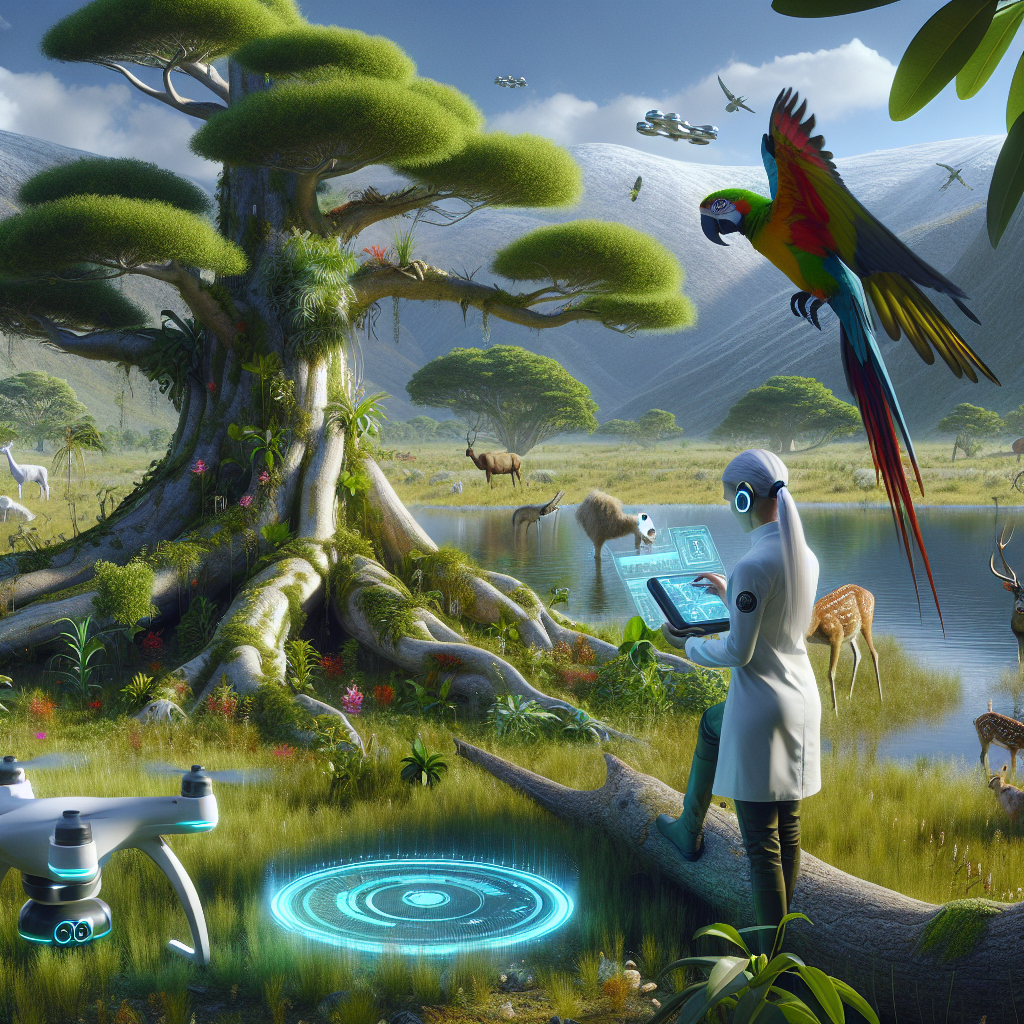Biodiversity conservation is a critical issue facing our planet today. With the rapid loss of species and ecosystems, there is an urgent need for innovative solutions to protect and preserve the natural world. Artificial intelligence (AI) is one such solution that is being increasingly utilized in biodiversity conservation efforts.
AI-powered solutions have the potential to revolutionize the way we monitor and manage biodiversity. By harnessing the power of machine learning, data analysis, and predictive modeling, AI can help to identify species at risk, track population trends, and prioritize conservation efforts. In this article, we will explore some of the ways in which AI is being used in biodiversity conservation and the benefits it can bring to the field.
One of the key applications of AI in biodiversity conservation is in monitoring and tracking species populations. Traditional methods of monitoring wildlife populations, such as field surveys and camera traps, can be time-consuming and labor-intensive. AI-powered solutions can help to automate this process, making it faster, more efficient, and more accurate.
For example, AI can be used to analyze satellite imagery to track changes in habitat and detect the presence of endangered species. By using machine learning algorithms to process large amounts of data, conservationists can identify areas where species are at risk and take action to protect them.
Another important application of AI in biodiversity conservation is in predicting and mitigating the impacts of climate change on ecosystems. By analyzing historical data and using predictive modeling, AI can help to identify areas that are most vulnerable to climate change and develop strategies to protect them.
For example, AI can be used to predict how changes in temperature and precipitation will affect the distribution of species and habitats. By understanding these impacts in advance, conservationists can take proactive measures to protect vulnerable ecosystems and species.
AI can also be used to optimize conservation strategies and resource allocation. By analyzing data on species populations, habitat fragmentation, and other factors, AI can help to prioritize conservation efforts and allocate resources where they are most needed.
For example, AI can be used to identify areas where conservation efforts are most likely to be successful, based on factors such as habitat quality, species diversity, and connectivity. By focusing resources on these priority areas, conservationists can maximize the impact of their efforts and achieve greater conservation outcomes.
Overall, AI-powered solutions have the potential to revolutionize biodiversity conservation by providing new tools and insights to help protect and preserve the natural world. By harnessing the power of AI, conservationists can better understand and address the complex challenges facing biodiversity and work towards a more sustainable future for all species.
FAQs:
Q: How does AI help in monitoring wildlife populations?
A: AI can help in monitoring wildlife populations by analyzing satellite imagery, camera trap data, and other sources of information to track changes in habitat and detect the presence of endangered species.
Q: What are some examples of AI-powered solutions in biodiversity conservation?
A: Some examples of AI-powered solutions in biodiversity conservation include using machine learning algorithms to analyze data on species populations, habitat fragmentation, and climate change impacts.
Q: How can AI help in predicting the impacts of climate change on ecosystems?
A: AI can help in predicting the impacts of climate change on ecosystems by analyzing historical data and using predictive modeling to identify areas that are most vulnerable to climate change.
Q: How can AI be used to optimize conservation strategies?
A: AI can be used to optimize conservation strategies by analyzing data on species populations, habitat quality, and other factors to prioritize conservation efforts and allocate resources where they are most needed.

